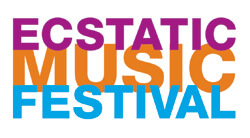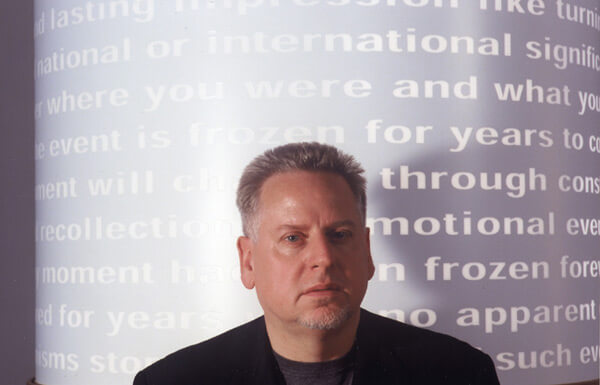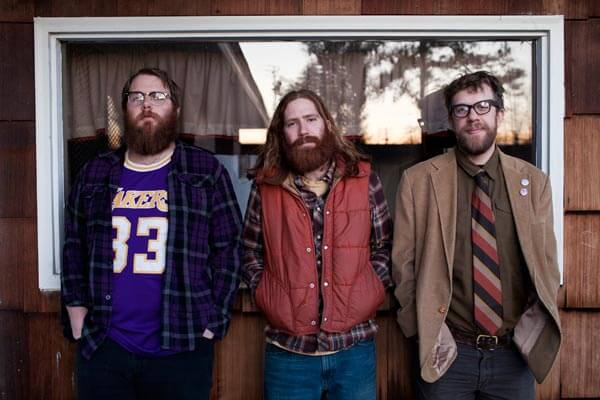 Berlin based composer and media artist Arnold Dreyblatt and North Carolina based psychedelic folk band Megafaun are at first glance an unlikely collaborative. Dreyblatt is part of the second generation of minimalist composers, a formidable artist equally at home in the gallery and concert hall. Megafaun are an adventurous band of good ole’ boys, whose music incorporates rock, country, bluegrass, jazz, Americana and psychedelia with a Southern, via Wisconsin, flair. The twain meets in Dreyblatt’s “rock-oriented minimalism” and Megafaun’s layered, experimental and avant-garde approach to re-creating rock. On February 27, 2013, Dreyblatt and Megafaun came together at the Ecstatic Music Festival at Merkin Concert Hall in the Kaufman Music Center to highlight the result of over 6 years of collaboration.
Berlin based composer and media artist Arnold Dreyblatt and North Carolina based psychedelic folk band Megafaun are at first glance an unlikely collaborative. Dreyblatt is part of the second generation of minimalist composers, a formidable artist equally at home in the gallery and concert hall. Megafaun are an adventurous band of good ole’ boys, whose music incorporates rock, country, bluegrass, jazz, Americana and psychedelia with a Southern, via Wisconsin, flair. The twain meets in Dreyblatt’s “rock-oriented minimalism” and Megafaun’s layered, experimental and avant-garde approach to re-creating rock. On February 27, 2013, Dreyblatt and Megafaun came together at the Ecstatic Music Festival at Merkin Concert Hall in the Kaufman Music Center to highlight the result of over 6 years of collaboration.

Composer/performer Arnold Dreyblatt (photo credit: dreyblatt.de)
This mashup of Megafaun with Arnold Dreyblatt is just the sort of exhibition of original and unexpected pairings that makes the Ecstatic Music Festival such a vital and rare contribution to the new music scene. The concert began with two seamless works from Dreyblatt; the first Nodal Excitation from 1979, followed by an excerpt from Spin Ensemble from 2011. Dreyblatt played both works on a modified upright bass, with laptop and electronics.
Dreyblatt’s bass is his original creation, re-strung with steel piano wire and played by being hit or bowed. Rather than the standard 12-tone equal tempered Western scale, Dreyblatt uses just intonation, a tuning system that allows for pure ratios of small whole numbers, and in his case allows him to play 20 notes per octave rather than the standard eight common to our ears. This creates an enlarged expressive potential and dynamic use of overtone. It can also create discomfort through the sound of unfamiliar pitches and scales. For the passive and indolent aural dispositions of many average listeners, at times Dreyblatt’s Nodal Excitation is grating and relentless in its excited rhythmic overtones.

Megafaun (photo credit: DL Anderson)
Megafaun entered the stage and the black suit shifted to plaid shirts, beards and songs about trains, rambling and salvation. Megafaun, sonically adventurous and widely referential in some of their previous recordings, here presented a more traditional offering of songs for sitting around the campfire and gazing out of dusty windows. They opened with a cover of Boomer’s Story by Ry Cooder, followed by several of their own songs including Real Slow and His Robe. Megafaun is made up of Phillip Cook on banjo and modified electric guitar; his brother Bradely Cook on electric bass, acoustic guitar and mandolin; and Joseph Westerlund on percussion and electric guitar. Megafaun’s strength is their vocal harmonies and acoustic warmth, paired with a gentle, disquieting, compositional originality.
After the intermission Dreyblatt joined Megafaun for four of their collaborative works, soon to be released on a new album: Home Hat Placement, Recurrence Plot, Edge Isolation and Radiator. Here the concert hall, the club, the revival, the railway, and the happening came together to bridge southern charm and new world abrasion into something surprisingly lively and engaging. In the rousing opening composition, Home Hat Placement, the overtones and expanded tonal range of the modified bass provided an otherworldly, cultivated combination to the driving and toe-tapping banjo, drums and guitar. Another highlight was Recurrence Plot, a down-tempo, sensual and confident composition, with a combination of sustained notes on the modified bass, bass guitar, and a repetitive slowed drum beat that oozed bravado and moxie. Other compositions presented widely variant scene and soundscapes, filling the room alternatively with ambient drone, noise, filmic melodies, and ruckus reverb.
When Dreyblatt introduced the collaboration he explained that back in the old days, something like this would not have been possible, going on to say, “We are no longer one-dimensional people.” Herein lies the most striking and salient summary of the magic of the night. It was when the musicians came together to disrupt and fuse their broad musical aptitudes that the room bowed to the round and vibrant new possibilities.
–
Adrianne Koteen is a New York City based artist and educator. Follow her on twitter@akoteen.




















